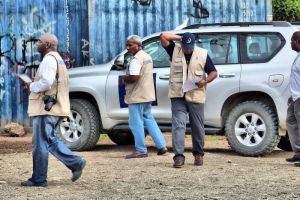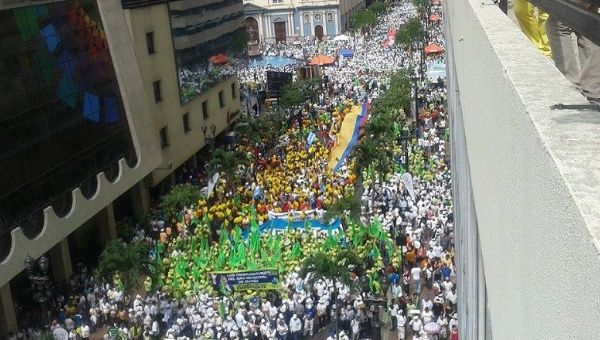By Delisa Morris
Impunity Watch Reporter, South America
BOGOTA, Colombia — President Juan Manuel Santos suspended peace talks in Cuba this week, which are quickly approaching their second year, amid the kidnapping of General Ruben Dario Alzate.
Today, Colombian Marxist rebels agreed to release General Alzate. Colombians hope that this will diffuse the situation and resume the peace talks to end conflict that has spanned over five decades. The rebel forces, also known as the Revolutionary Armed Forces of Colombia (FARC) also agreed to release four other captives, that have been captured in the past two weeks.
President Juan Manuel Santos’s office responded immediately to the announcement, pledging to resume talks as soon as the hostages are free.
Alzate and two others were seized on Sunday by a FARC patrol as they left a boat in the poor and crime-ridden coastal region of Choco, prompting Santos to halt talks and throwing into doubt the two-year peace process under way in Cuba.
Just days earlier, the rebels had kidnapped two soldiers in eastern Arauca department.
“The government will give its total collaboration to guarantee the safe return of these people to their homes, which we hope will be in the shortest time possible,” Santos’s office said in a brief statement.
“Once they are all free, the government’s delegation will return to Havana.”
The FARC’s decision to release the captives may counter critics of the peace process who say the rebels are not serious about ending Latin America’s longest-running war, which has killed more than 200,000 people since it began in 1964.
The suspension of talks is the most serious setback to peace efforts after months of complicated discussions resulted in partial accords on three out of five agenda items.
Wednesday, the FARC defended the negotiations aimed at ending the half-century conflict. A FARC commander best known by his alias Ivan Marquez said the biggest achievement so far is a growing sense of reconciliation among Colombians.
The two sides have already reached agreements on agrarian reform, political participation for the FARC and how to jointly combat illicit drugs in what was long the world’s largest cocaine producer.
But the remaining issues, including how the FARC will lay down their arms and whether commanders will face prosecution for atrocities and drug-trafficking, are some of the thorniest.
The most recent peace process with the FARC collapsed in 2002 after the group used the breathing room of a demilitarized zone to build its fighting force, intensify its cocaine trafficking, and take hostages.
The final straw came when the FARC boarded a commercial plane and seized a senator, who was held captive for six years.
For more information, please see:
ABC News – Colombia Rebel-Held General a Bookish Strategist – 20 Nov. 2014
BBC News – Colombia kidnap: Farc agrees conditions for release – 19 Nov. 2014
ABC News – Colombia, Rebels Agree on Steps to Free General – 19 Nov. 2014
Reuters – Colombia rebels to free general, opening door to resume peace talks – 20 Nov. 2014



